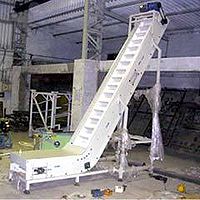Difference between revisions of "Enclosed Flight Elevators"
(Created page with "Category:Elevators{{Knoppen}} <noinclude><!------------------------------------------------ * READ THIS FIRST * Only edit this page if you can improve the content. * Imprope...") |
PurplePen19 (talk | contribs) |
||
| Line 7: | Line 7: | ||
* Please start editing this page after the /noinclude | * Please start editing this page after the /noinclude | ||
* -------------------------------------------------></noinclude> | * -------------------------------------------------></noinclude> | ||
This | [[File:Enclosed Flight Elevators.jpg|thumb|200px|right|Enclosed Flight Elevators]] | ||
'''Enclosed Flight Elevators''' are one of three primary flight control surfaces found on an airplane. | |||
These elevators control the movement of the airplane about its lateral axis. This motion is called pitch. The elevators form the rear part of the horizontal tail assembly and are free to swing up and down. They are hinged to a fixed surface—the horizontal stabilizer. Together the horizontal stabilizer and the elevators form a single airfoil. A change in the elevator's position modifies the camber of the airfoil, increasing or decreasing lift. | |||
The elevators are connected to the control stick by control cables. Pushing the stick forward moves the elevators downward. This increases the lift produced by the horizontal tail surfaces and causes the nose to drop. Pulling back on the stick causes the elevators to move upward, decreasing the lift produced by the horizontal tail surfaces and forcing the nose upward. | |||
Revision as of 08:13, 25 August 2012
Enclosed Flight Elevators are one of three primary flight control surfaces found on an airplane.
These elevators control the movement of the airplane about its lateral axis. This motion is called pitch. The elevators form the rear part of the horizontal tail assembly and are free to swing up and down. They are hinged to a fixed surface—the horizontal stabilizer. Together the horizontal stabilizer and the elevators form a single airfoil. A change in the elevator's position modifies the camber of the airfoil, increasing or decreasing lift.
The elevators are connected to the control stick by control cables. Pushing the stick forward moves the elevators downward. This increases the lift produced by the horizontal tail surfaces and causes the nose to drop. Pulling back on the stick causes the elevators to move upward, decreasing the lift produced by the horizontal tail surfaces and forcing the nose upward.
